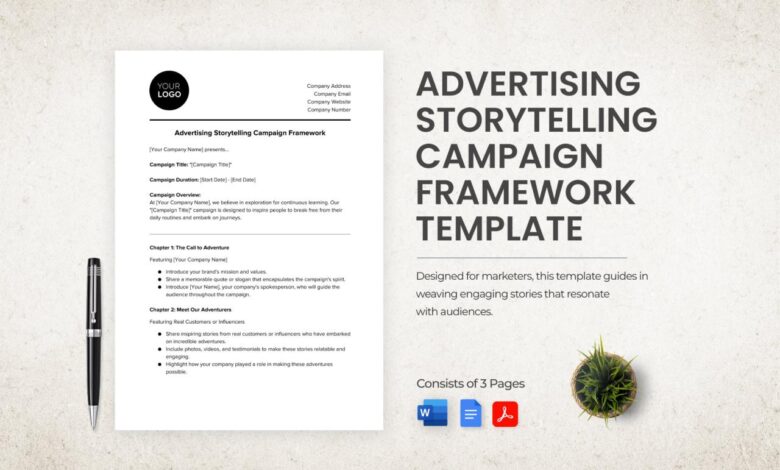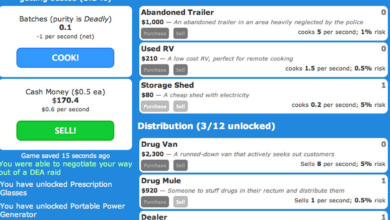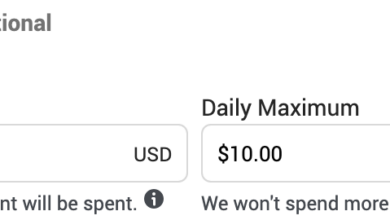
Advertising Campaign Framework A Comprehensive Guide
Advertising campaign framework provides a structured approach to creating successful advertising campaigns. This guide delves into the essential elements, from defining the framework itself to adapting and optimizing it based on performance data. We’ll explore the stages, target audiences, objectives, messaging, channels, budgeting, and measurement, providing a practical roadmap for crafting impactful campaigns.
Understanding the various stages of an advertising campaign framework, from initial planning to final evaluation, is crucial for achieving desired results. A well-defined framework helps ensure that all aspects of the campaign are aligned, from target audience identification to budget allocation, maximizing the potential for success.
Defining the Framework
An advertising campaign framework is a structured blueprint that guides the entire process from initial concept to final execution. It’s more than just a list of tasks; it’s a roadmap that ensures consistency, efficiency, and a clear path to achieving marketing objectives. This structure helps align all aspects of the campaign, from creative development to media buying, ensuring a unified message and maximized impact.A robust framework provides a consistent approach, preventing ad hoc decision-making that can dilute the overall message and waste resources.
It also facilitates accountability and allows for easier tracking of progress and measurement of results. This predictability is crucial for campaigns of any size, enabling marketers to effectively allocate budgets and anticipate potential challenges.
Key Components of a Robust Framework
A strong advertising campaign framework necessitates several crucial components. These components work in tandem to ensure a cohesive and effective campaign.
- Objectives and Goals: Defining specific, measurable, achievable, relevant, and time-bound (SMART) objectives is paramount. This establishes a clear target for the campaign, ensuring that all efforts are directed towards achieving quantifiable results. Examples include increasing brand awareness by 15% or boosting sales by 10% within a specified timeframe. A clear understanding of what the campaign aims to accomplish is the bedrock of the entire process.
- Target Audience Definition: Understanding the target audience’s demographics, psychographics, needs, and motivations is critical. This deep dive into the audience’s characteristics allows for tailored messaging and more effective channel selection. This data-driven understanding informs creative development and ensures the campaign resonates with the intended recipients.
- Messaging and Positioning: A compelling and consistent message is essential for effective communication. The campaign’s unique selling proposition (USP) needs to be highlighted to stand out in a crowded marketplace. A well-defined positioning strategy differentiates the brand from competitors, fostering brand recognition and preference.
- Creative Strategy: This involves developing creative concepts and executions that align with the overall message and target audience. The chosen creative assets, such as visuals, copy, and tone, must be carefully considered to effectively communicate the brand’s value proposition.
- Media Strategy: Selecting the appropriate channels for reaching the target audience is critical. This involves identifying the most effective platforms, considering their reach and impact. A well-defined media strategy leverages the strengths of each channel, maximizing exposure and ROI.
- Budget Allocation: A realistic budget is crucial for efficient campaign management. This includes allocating resources for creative development, media buys, and campaign monitoring. Understanding the costs associated with each aspect of the campaign is vital to ensuring budget adherence.
- Evaluation and Measurement: Establishing clear metrics for measuring campaign success is essential. This includes tracking key performance indicators (KPIs) such as website traffic, social media engagement, and sales conversions. Monitoring these metrics enables marketers to make data-driven adjustments to optimize campaign performance.
Framework Template for an Advertising Campaign
A basic framework template provides a structured approach to developing advertising campaigns.
| Component | Description |
|---|---|
| Executive Summary | A concise overview of the campaign’s goals, target audience, and key strategies. |
| Situation Analysis | An assessment of the current market landscape, including competitive analysis and brand positioning. |
| Objectives and Goals | Specific, measurable, achievable, relevant, and time-bound (SMART) objectives. |
| Target Audience Profile | Detailed description of the target demographic and psychographic characteristics. |
| Messaging and Positioning | Key message, unique selling proposition (USP), and brand positioning. |
| Creative Strategy | Concept development, creative execution, and visual/verbal elements. |
| Media Strategy | Selection of channels, media mix, and budget allocation. |
| Budget Allocation | Detailed breakdown of expenses for various campaign components. |
| Timeline | Scheduled activities and deadlines for each campaign phase. |
| Evaluation and Measurement | KPIs and metrics for tracking campaign performance. |
Stages of the Framework
An effective advertising campaign isn’t a spontaneous burst of creativity; it’s a carefully orchestrated journey. This framework Artikels the sequential stages, highlighting the interdependencies between each step to ensure a cohesive and impactful campaign. Understanding these stages allows for strategic resource allocation and efficient campaign management.The advertising campaign framework unfolds in a logical sequence, ensuring each stage builds upon the previous one.
The interdependencies between stages are crucial. A well-defined target audience, for instance, directly influences the choice of media channels and the crafting of compelling messaging. Thorough market research informs the creative strategy and ensures the campaign resonates with the target audience.
Planning and Research
This initial stage is foundational to the entire campaign. It lays the groundwork for success by understanding the target audience, competitive landscape, and overall campaign objectives.
- Defining Target Audience: Identifying the specific demographics, psychographics, and behaviors of the ideal customer. This includes creating detailed customer personas to understand their needs, motivations, and pain points. For example, a campaign for a new fitness app might target young professionals between 25 and 35 who value convenience and health.
- Market Analysis: Assessing the competitive landscape to identify opportunities and threats. This involves analyzing competitors’ strategies, pricing, messaging, and market share. Detailed competitor analysis helps determine unique selling propositions and avoid direct head-on competition.
- Setting Campaign Objectives: Clearly defining measurable goals for the campaign. These objectives should be specific, measurable, achievable, relevant, and time-bound (SMART). For instance, a campaign objective might be to increase brand awareness by 20% among the target audience within the next quarter.
- Budget Allocation: Determining the financial resources available for the campaign. This includes allocating funds for various elements like media buys, creative development, and personnel.
Creative Development
This stage focuses on crafting compelling messaging and visuals that resonate with the target audience. Effective communication is key to achieving the campaign objectives.
- Developing Messaging Strategy: Crafting key messages that effectively communicate the value proposition and address the target audience’s needs and desires. This involves creating a unique selling proposition that sets the brand apart from competitors.
- Creative Brief Development: Creating a comprehensive document outlining the campaign’s goals, target audience, key messages, and creative requirements. This document serves as a guide for the creative team.
- Visual Design: Creating visually appealing and engaging assets like logos, imagery, and videos that align with the brand’s identity and campaign messaging. Consider the overall aesthetic and visual style of the campaign to ensure a cohesive look and feel.
- Media Selection: Choosing the most effective channels to reach the target audience, considering factors like budget, reach, and audience engagement. Television, radio, social media, and online advertising are common options.
Implementation and Execution
This stage involves putting the campaign into action. Coordination and precise execution are critical to ensure a seamless and efficient process.
- Media Buying: Securing advertising placements across chosen media channels. This includes negotiating rates, scheduling ads, and managing ad contracts.
- Content Distribution: Distributing campaign materials across various platforms, ensuring timely and accurate dissemination of information. This includes publishing content on websites, social media, and other digital channels.
- Monitoring and Evaluation: Tracking campaign performance and measuring progress towards set objectives. This involves analyzing key metrics, such as impressions, click-through rates, and conversions.
Measurement and Optimization
This stage involves analyzing campaign performance and making necessary adjustments to optimize results.
- Performance Tracking: Analyzing key performance indicators (KPIs) to gauge campaign effectiveness. This includes tracking metrics such as website traffic, sales conversions, and social media engagement.
- Data Analysis: Interpreting data to identify areas for improvement and optimize campaign strategies. Identifying patterns and trends in data is crucial for making informed decisions.
- Campaign Adjustments: Making necessary adjustments to the campaign based on performance data and market feedback. This might involve modifying messaging, targeting, or creative elements.
Target Audience Identification
Defining your target audience is crucial for any successful advertising campaign. Understanding who you’re trying to reach allows you to tailor your message, choose the right channels, and maximize your return on investment. This step is about more than just demographics; it’s about understanding motivations, needs, and pain points that resonate with your ideal customer.Identifying the right target audience involves a deep dive into consumer behavior, market trends, and competitor analysis.
This knowledge helps you craft a message that speaks directly to their desires and solves their problems. This process, when executed effectively, results in a more impactful and cost-effective advertising campaign.
Methods for Defining Target Audience
Understanding your target audience requires a multi-faceted approach. This includes market research, surveys, and competitor analysis. These tools provide valuable insights into the characteristics and behaviors of your potential customers. Analyzing existing customer data and segmenting them based on shared characteristics will also help in developing a clear profile of your ideal customer.
Characteristics of the Target Audience
Target audience characteristics are often categorized into demographics, psychographics, and behavioral factors. Demographics include age, gender, location, income, education, and occupation. Psychographics delve into values, interests, lifestyle, personality, and attitudes. Behavioral factors, on the other hand, examine purchasing habits, brand loyalty, and online activity.Understanding these characteristics is vital in crafting a message that resonates with your target audience.
For example, a campaign targeting young professionals might focus on career advancement and financial independence, whereas a campaign targeting families might emphasize family values and safety.
Behavioral Factors of the Target Audience
Behavioral factors are crucial in understanding how your target audience interacts with products and services. These factors encompass their purchase patterns, brand loyalty, preferred channels for communication, and online activities. Analyzing this data allows for a tailored approach in messaging, ensuring it aligns with their typical interactions and engagement with brands.For example, a company targeting frequent online shoppers might focus on user-friendly e-commerce platforms and online promotions.
Crafting a successful advertising campaign framework often hinges on understanding user behavior. A crucial element, often overlooked, is the follow-up strategy for potential customers who abandon their shopping carts. This is where a detailed guide like shopping cart abandonment emails guide comes in handy. Ultimately, a well-rounded advertising campaign framework needs to consider these touchpoints to maximize conversions.
On the other hand, a company targeting traditional consumers might focus on in-store promotions and community engagement.
Target Audience Profiles
Creating target audience profiles is a critical step in the advertising campaign. These profiles are detailed descriptions of the ideal customer, encompassing their demographics, psychographics, and behaviors. This allows for the development of tailored messaging that resonates with the specific characteristics of the group.
| Profile Name | Demographics | Psychographics | Behaviors |
|---|---|---|---|
| Tech-Savvy Millennial | Age 25-35, Urban Dweller, High Income | Value Innovation, Tech-Focused, Socially Conscious | Frequent Online Shoppers, Early Adopters of New Technology, Active on Social Media |
| Family-Oriented Homeowner | Age 35-50, Suburban/Rural, Middle-to-High Income | Value Family, Stability, Community Involvement | Seek Value, Consider Safety and Reliability, Shop at Local Businesses |
Segmentation of the Target Audience
Segmenting your target audience is a process of dividing the market into smaller, more manageable groups based on shared characteristics. These segments allow for more targeted advertising efforts, leading to increased efficiency and ROI. Common segmentation methods include demographic, psychographic, and behavioral segmentation.Segmenting allows for a more nuanced approach to marketing, tailoring messages to specific groups’ needs and desires.
For instance, a company targeting both young professionals and families would likely have two distinct segments within their overall target audience, each receiving customized marketing messages.
Objectives and Strategies: Advertising Campaign Framework
Defining clear objectives and selecting effective strategies are crucial for any successful advertising campaign. These elements form the bedrock upon which a campaign is built, guiding all subsequent actions and ensuring that resources are deployed efficiently. A well-defined strategy, rooted in measurable objectives, allows for consistent evaluation of progress, enabling necessary adjustments and improvements throughout the campaign’s lifecycle.
This section delves into the critical importance of establishing SMART objectives and exploring various advertising strategies.
Establishing Measurable Objectives
Effective advertising campaigns require precise, measurable objectives. These objectives provide a roadmap for the campaign, guiding decisions about targeting, messaging, and media channels. Vague or non-measurable goals lead to wasted resources and a lack of accountability. Establishing clear metrics for success allows for continuous tracking and improvement, ensuring that the campaign stays on track and achieves its desired outcomes.
SMART Objectives for Advertising Campaigns
SMART objectives are essential for quantifying campaign success. They ensure that objectives are Specific, Measurable, Achievable, Relevant, and Time-bound.
- Specific: Instead of “increase brand awareness,” a SMART objective might be “increase brand awareness among millennials in the San Francisco Bay Area by 15% within the next quarter.”
- Measurable: Using metrics like website traffic, social media engagement, or sales figures allows for precise tracking of progress toward the objective.
- Achievable: Objectives should be realistic and attainable given the available resources and target audience.
- Relevant: Objectives should align with the overall business goals and marketing strategy.
- Time-bound: Objectives should have a specific timeframe for completion, ensuring accountability and focus.
Different Advertising Strategies
Various strategies can be employed to achieve campaign objectives. Choosing the right strategy depends on factors such as budget, target audience, and campaign goals.
- Social Media Marketing: Leveraging platforms like Facebook, Instagram, and Twitter allows for targeted advertising, engagement with potential customers, and building brand communities. It’s highly effective in reaching younger demographics and fostering a sense of brand loyalty.
- Search Engine Marketing (SEM): This strategy focuses on increasing visibility in search engine results pages (SERPs) through paid advertising. It’s effective for driving immediate traffic to a website and targeting specific s related to products or services.
- Content Marketing: Creating valuable and informative content (blog posts, articles, videos) attracts potential customers, positions the brand as an industry leader, and establishes trust. This approach is often seen as a long-term strategy for building brand awareness and authority.
- Email Marketing: Building an email list and sending targeted messages can nurture leads, drive sales, and build customer relationships. It’s a cost-effective way to communicate directly with potential customers.
Comparing and Contrasting Advertising Strategies
Different strategies offer unique advantages and disadvantages. Choosing the right approach requires careful consideration of the target audience, budget, and desired outcomes.
| Strategy | Advantages | Disadvantages |
|---|---|---|
| Social Media Marketing | Targeted reach, cost-effective, fosters engagement | Requires consistent content creation, can be time-consuming |
| Search Engine Marketing | High visibility, immediate traffic | Can be expensive, requires ongoing optimization |
| Content Marketing | Builds brand authority, long-term benefits | Requires significant time investment, may not yield immediate results |
| Email Marketing | Direct communication, cost-effective | Requires a well-built email list, susceptible to spam filters |
Messaging and Creative Development
Crafting compelling advertising messages is crucial for capturing attention and driving desired actions. Effective messaging goes beyond simply stating product features; it connects with the target audience on an emotional level, highlighting the benefits and value proposition. This stage requires careful consideration of the brand’s voice, tone, and overall identity to ensure consistency across all advertising materials.A well-defined messaging strategy ensures that the advertising campaign resonates with the target audience and achieves the set objectives.
It’s not just about what is said, but also how it is said, and the overall impression left on the consumer. Brand consistency in messaging is essential for building trust and recognition over time.
Crafting Compelling Advertising Messages
Developing compelling advertising messages requires a deep understanding of the target audience’s needs, desires, and pain points. The process involves careful research and analysis to identify the key messages that will resonate most effectively. This involves translating complex product information into clear, concise, and engaging language that speaks directly to the target audience. Consider using storytelling techniques to create emotional connections and make the message memorable.
Brand Consistency in Messaging, Advertising campaign framework
Maintaining brand consistency in messaging is vital for building brand recognition and trust. A consistent brand voice, tone, and visual identity across all advertising materials creates a cohesive and memorable brand experience. This ensures that the brand is perceived in a unified and positive manner by the target audience. Inconsistency can lead to confusion and a diluted brand image.
Examples of Effective Advertising Slogans and Taglines
Effective slogans and taglines are concise, memorable, and accurately reflect the brand’s essence. They should be easily understood and easily remembered. Some notable examples include Nike’s “Just Do It,” McDonald’s “I’m Lovin’ It,” and Apple’s “Think Different.” These slogans are impactful because they capture the core values and promises of the brand, while also being simple enough to stick in the consumer’s mind.
Different Messaging Styles and Suitability
| Messaging Style | Description | Suitable Audience | Examples |
|---|---|---|---|
| Informative | Focuses on factual information and details about the product or service. | Audiences seeking in-depth knowledge and technical specifics. | Technical manuals, product specifications, educational materials. |
| Emotional | Appeals to the audience’s feelings and emotions. | Audiences who are motivated by feelings and personal connections. | Advertisements for luxury goods, personal care products, or social causes. |
| Humorous | Uses humor to capture attention and create a positive association with the brand. | Audiences who enjoy lightheartedness and are receptive to playful advertising. | Advertisements for food, entertainment, or everyday products. |
| Problem-Solution | Focuses on identifying a problem and presenting the product or service as the solution. | Audiences experiencing a specific problem or seeking a practical solution. | Advertisements for software, appliances, or financial services. |
Channels and Platforms
Choosing the right channels and platforms is crucial for maximizing the reach and impact of an advertising campaign. A well-defined strategy ensures your message resonates with the target audience, leading to higher conversion rates and return on investment. This section delves into the various channels available, their effectiveness, and how to select the most suitable ones for your campaign goals.
Crafting a killer advertising campaign framework often involves meticulous planning. Understanding the target audience is key, but also recognizing the crucial role of a strong CMO like Michelle Draper, CMO of Silicon Valley Bank, Michelle Draper cmo silicon valley bank , who’s clearly demonstrated success in this area. Ultimately, a well-structured framework ensures your campaign achieves its objectives, whether it’s raising brand awareness or boosting sales.
Available Advertising Channels
Different channels cater to diverse needs and target audiences. Understanding the strengths and weaknesses of each channel is paramount for successful campaign execution. Various online and offline options exist, each with its unique characteristics.
- Social Media Marketing: Platforms like Facebook, Instagram, Twitter, and TikTok allow for highly targeted advertising. These channels excel at reaching specific demographics and interests, enabling campaigns to connect with potential customers on a more personal level. Targeted ads can be tailored to user behavior and preferences.
- Search Engine Marketing (SEM): Utilizing paid search ads on platforms like Google Ads allows for immediate visibility in search results. This channel is ideal for driving traffic to websites and generating leads quickly, especially for businesses seeking immediate results.
- Display Advertising: This encompasses banner ads, video ads, and other visual formats displayed on websites and apps. It offers broad reach and brand awareness opportunities, ideal for building brand recognition.
- Email Marketing: Targeted email campaigns remain a potent tool for nurturing leads and driving conversions. Building an email list and segmenting audiences allows for personalized messaging and effective follow-up.
- Influencer Marketing: Partnering with influential figures in your target niche can increase brand credibility and engagement. This channel relies on trust and authority, often resulting in higher conversion rates.
- Television and Radio Advertising: These traditional media channels still hold value, especially for reaching broader audiences and creating a strong emotional connection with viewers and listeners. They are effective for building brand awareness and recognition.
- Print Advertising: While digital channels dominate, print advertising remains relevant for specific demographics and industries. Magazines and newspapers can still reach niche audiences effectively.
Effectiveness of Channels
The effectiveness of a channel depends significantly on the campaign’s objectives and target audience. A channel that excels in brand awareness might not be the best choice for driving immediate sales. Understanding the specific goals of the campaign is crucial.
Comparison of Advertising Channels
| Channel | Pros | Cons |
|---|---|---|
| Social Media | Highly targeted, cost-effective, interactive | Requires consistent engagement, potential for negative feedback |
| SEM | High visibility, immediate results, measurable | Can be expensive, requires ongoing optimization |
| Display Advertising | Wide reach, visually engaging, branding opportunities | Potential for ad blindness, lower click-through rates |
| Email Marketing | Targeted, personalized, measurable, cost-effective | Requires a valid email list, potential for spam complaints |
| Influencer Marketing | Credibility, high engagement, targeted reach | Requires careful selection of influencers, potential for misalignment |
| Television/Radio | Mass reach, emotional impact, strong brand recall | High cost, less targeted, less measurable |
| Print Advertising | Tangible, durable, niche targeting | Limited reach, less measurable, expensive |
Channel Selection
The best channels for your campaign depend on your specific objectives and target audience. Consider factors such as budget, desired outcomes, and audience demographics. For instance, a campaign focused on immediate sales might prioritize SEM and social media advertising, while a campaign aiming for long-term brand awareness might utilize television or print ads. Thorough research and planning are essential for a successful campaign.
Budget Allocation and Tracking

Effective advertising campaigns hinge on meticulous budget management. A well-defined budget, strategically allocated across various stages and channels, is crucial for maximizing ROI and achieving campaign objectives. Without careful tracking, even the most brilliant strategies can falter due to inefficient spending.Understanding the financial landscape of your campaign is paramount. This involves not only allocating funds but also consistently monitoring performance to ensure that your investments are yielding the desired results.
This proactive approach allows for course correction and optimized resource utilization.
Budget Allocation Models
Budget allocation models vary depending on factors like campaign complexity, target audience, and available resources. A common approach is to allocate funds proportionally to the expected return on investment for each channel. For example, a highly targeted social media campaign might receive a larger allocation than a broader, more generalized print advertisement.
Crafting a killer advertising campaign framework needs a solid foundation. Knowing how your ads are performing on YouTube is crucial, and using the best rank tracking tools for YouTube videos, like those found here the best rank tracking tools for youtube videos , gives you real-time insights. This data helps you optimize your campaigns for better results, making your framework more effective overall.
- Proportional Allocation: This model distributes funds based on the anticipated performance of each channel. For instance, if social media is projected to generate a higher conversion rate, a larger portion of the budget would be allocated to it. This approach relies heavily on data analysis and historical campaign performance. A crucial component is defining the factors influencing the predicted performance, such as audience reach and engagement rates.
- Fixed Percentage Allocation: This model dedicates a specific percentage of the overall budget to each channel. This approach is useful when historical data is limited or inconsistent, providing a more stable allocation across channels. For instance, a company might allocate 30% of its budget to social media, 20% to search engine marketing, and 50% to other channels, maintaining a balance across platforms.
- Performance-Based Allocation: This model adjusts budget allocation based on the actual performance of each channel. For instance, if a specific channel demonstrates a significant increase in engagement, a larger proportion of the budget can be redirected to it. This dynamic approach can be more complex to implement but often leads to higher ROI.
Tracking Campaign Performance
Robust tracking mechanisms are essential for measuring the effectiveness of your advertising efforts. They provide insights into which channels and strategies are generating the most significant returns.
- Key Performance Indicators (KPIs): Monitoring KPIs like website traffic, click-through rates (CTR), conversion rates, and customer acquisition cost (CAC) is critical for assessing campaign success. For instance, a high CTR suggests that your ad copy is engaging and relevant to the target audience. These metrics are used to identify trends and areas for improvement.
- Data Analysis Tools: Utilizing dedicated analytics platforms is vital. These tools offer comprehensive data visualization, allowing for in-depth analysis of campaign performance across various channels. Google Analytics, for example, provides extensive data on website traffic, user behavior, and conversions.
- Attribution Modeling: Understanding how different touchpoints contribute to conversions is crucial. Attribution modeling helps determine the effectiveness of each channel in driving conversions. For example, a customer might click on a social media ad, then visit the website through a search engine, and finally make a purchase. Attribution modeling clarifies the role each channel played in the entire process.
Measuring Return on Investment (ROI)
Calculating ROI is essential to demonstrate the value of your advertising investments. This calculation allows you to assess the profitability of your campaigns and identify areas for optimization.
- Formula: The formula for calculating ROI is: [(Revenue generated – Cost of advertising) / Cost of advertising]
– 100%. A high ROI indicates that your advertising investments are generating significant returns. For instance, if a campaign generates $10,000 in revenue and costs $2,000, the ROI is 400%. - Case Studies: Analyzing successful campaigns provides insights into how similar strategies have yielded positive outcomes. For instance, a case study might reveal that a particular social media platform generated a higher ROI for a specific product launch.
Measurement and Evaluation
Knowing how well your advertising campaign performs is crucial for success. It’s not enough to simply launch a campaign; you need to track its progress, analyze the results, and identify areas for improvement. This meticulous process allows for optimization, enabling you to fine-tune your strategy and maximize ROI.Effective campaign measurement involves more than just looking at superficial data points.
It requires a deep understanding of the metrics that matter most to your campaign goals and a framework for analyzing the data to identify trends and opportunities. This data-driven approach ensures that your advertising efforts are not only impactful but also sustainable.
Key Performance Indicators (KPIs)
Understanding the right KPIs is essential for evaluating the effectiveness of your advertising campaigns. Choosing the correct KPIs depends heavily on your specific campaign objectives. If your goal is brand awareness, different metrics will be more relevant than those used for lead generation.
- Website Traffic: Website traffic measures the number of visitors to your website. This can be broken down into sessions, page views, and bounce rate, each providing a different facet of user engagement. A significant increase in traffic often signals successful campaign execution.
- Conversion Rate: This crucial metric tracks the percentage of visitors who complete a desired action, such as making a purchase, signing up for a newsletter, or filling out a form. A higher conversion rate suggests effective campaign messaging and compelling calls to action.
- Customer Acquisition Cost (CAC): CAC represents the total cost of acquiring a new customer. Tracking CAC is vital for assessing the profitability of your advertising spend. A lower CAC indicates more effective campaigns.
- Return on Investment (ROI): ROI measures the profitability of your advertising campaign by comparing the revenue generated to the cost of the campaign. A positive ROI demonstrates a successful campaign, while a negative ROI signifies areas for improvement.
- Brand Awareness: Tools and surveys can measure brand recall, recognition, and sentiment. Tracking brand awareness over time helps assess the campaign’s impact on your brand’s image and recognition.
Analyzing Campaign Data
Analyzing campaign data involves more than just noting the numbers. It’s about recognizing patterns, identifying trends, and understanding the “why” behind the results. By using data visualization tools, you can quickly spot significant increases or decreases in key metrics.
- Identify areas for improvement: If website traffic increases but conversion rates remain stagnant, the issue may lie in the user experience on your website. Analyzing campaign data systematically can help you pinpoint areas that require attention.
- Correlation analysis: Determine if certain ad variations or messaging styles correlate with specific performance metrics. This analysis can reveal which elements resonate best with your target audience and inform future creative decisions.
- A/B testing: Continuously test different variations of your ads, landing pages, and calls to action to see which perform best. This iterative approach refines your campaign for optimal results.
Metric Importance Table
The table below Artikels various metrics and their importance in campaign evaluation. Understanding the relative importance of each metric helps prioritize efforts for improvement.
| Metric | Importance | Example |
|---|---|---|
| Website Traffic | High – Indicates campaign visibility | Increased website traffic by 30% after a social media campaign launch. |
| Conversion Rate | High – Measures effectiveness of campaign | Conversion rate increased from 2% to 5% after optimizing landing pages. |
| Customer Acquisition Cost (CAC) | Medium – Indicates campaign profitability | CAC decreased by 15% after implementing targeted advertising. |
| Return on Investment (ROI) | High – Measures overall profitability | ROI increased by 20% due to a more focused campaign strategy. |
| Brand Awareness | Medium – Reflects campaign’s brand impact | Brand recall increased by 10% post-campaign. |
Adapting and Optimizing
A well-defined advertising campaign framework is a crucial starting point, but its effectiveness hinges on adaptability and optimization. Real-world performance data is the key to fine-tuning the strategy and maximizing ROI. By analyzing results, we can make informed adjustments to ensure the campaign stays on track and delivers the desired outcomes. This section details the process of adapting and optimizing a campaign based on performance data, including strategies for improvement over time.
Analyzing Performance Data
Performance data forms the bedrock of campaign adjustments. This includes metrics like website traffic, conversion rates, lead generation, and customer engagement. By tracking these key indicators, we can identify areas of strength and weakness. A comprehensive analysis of this data is essential to understand what is working and what isn’t. This will help us to make data-driven adjustments to improve campaign performance.
Adapting the Campaign Framework
Once performance data is analyzed, it’s time to make adjustments. The core framework, while well-structured, can be refined based on the observed data. This may involve altering targeting parameters, adjusting messaging, or optimizing ad creative. For example, if a particular channel isn’t generating the expected results, we may reallocate budget to a more effective channel. This dynamic approach allows for a continuous improvement process, ensuring the campaign remains aligned with evolving performance trends.
Optimizing Campaign Performance Over Time
Optimizing campaign performance requires a proactive approach. Regular monitoring and analysis are essential. Testing different ad variations and messaging can yield valuable insights. A/B testing is a common strategy to identify the most effective versions of ads, ensuring they resonate with the target audience.
Data-Driven Adjustments
Data-driven adjustments are crucial to a successful campaign. For instance, if a specific demographic isn’t responding to a particular ad, the targeting criteria can be adjusted to focus on a more receptive audience. Similarly, if conversion rates are low, the ad copy or landing page can be modified to increase user engagement.
Examples of Adjustments Based on Real-World Campaign Data
Consider a campaign targeting millennials for a new smartphone. Initial data revealed low engagement on social media platforms like TikTok. Consequently, the budget allocation for TikTok ads was reduced, and resources were redirected to Instagram, where engagement was higher. This reallocation, based on performance data, led to a significant improvement in campaign effectiveness.Another example: A B2B software company noticed a high bounce rate on their landing page.
Through A/B testing, they discovered a simpler layout with more prominent call-to-actions resulted in a 15% decrease in bounce rate. These examples highlight how data analysis and targeted adjustments can significantly enhance campaign performance.
Summary

In conclusion, a robust advertising campaign framework offers a structured blueprint for achieving marketing objectives. By understanding the stages, target audiences, objectives, messaging, channels, budget allocation, and measurement techniques, businesses can develop effective and efficient campaigns. Adapting and optimizing the framework based on performance data ensures continuous improvement and a high return on investment.





